The Brehon Laws: Unveiling Their Role in Ancient Irish Society
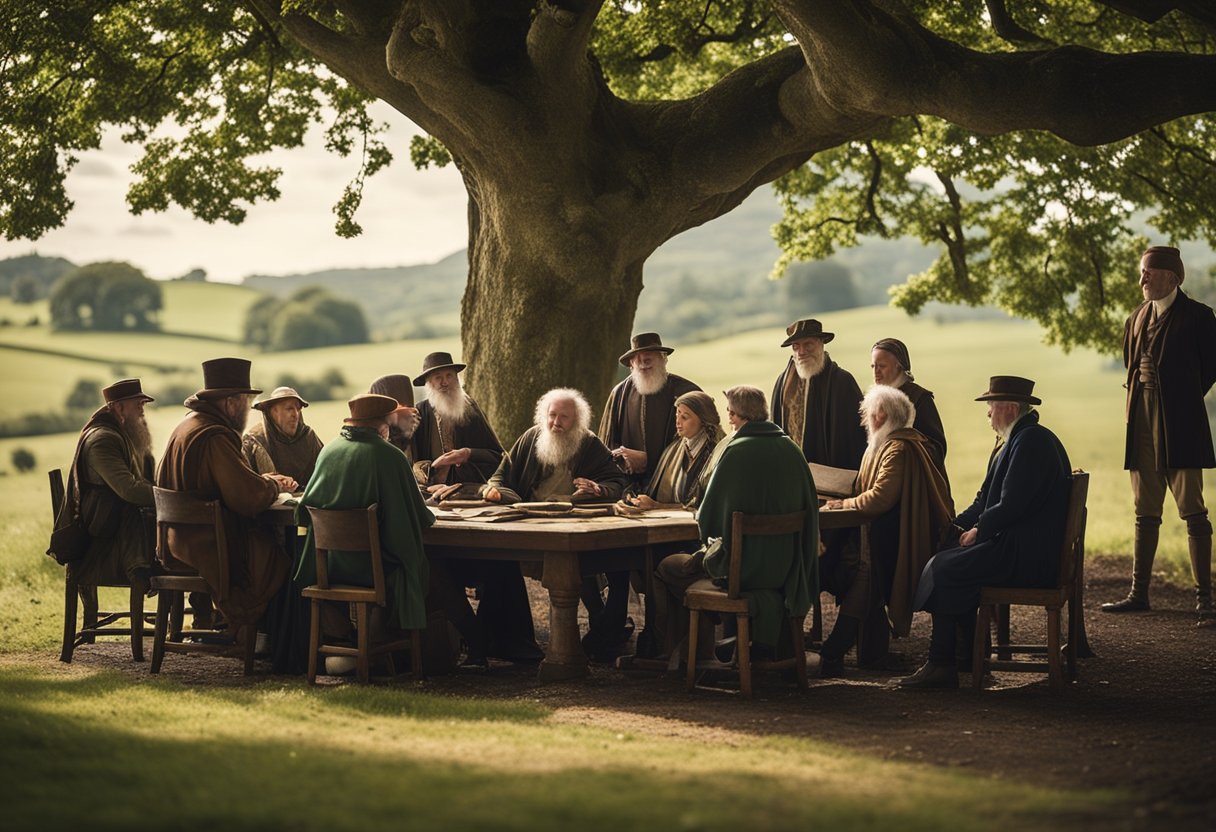
Updated On: March 17, 2024 by Eman Sameh
The Brehon Laws stand as a testament to the intricate legal and social workings of ancient Irish society. As one of the oldest surviving legal systems in Europe, they provided a framework for governance and justice in Ireland from the early Christian period until their decline in the 17th century. These laws were a distinctive feature of Gaelic society, reflecting its values, structures, and approach to maintaining order and resolving disputes.
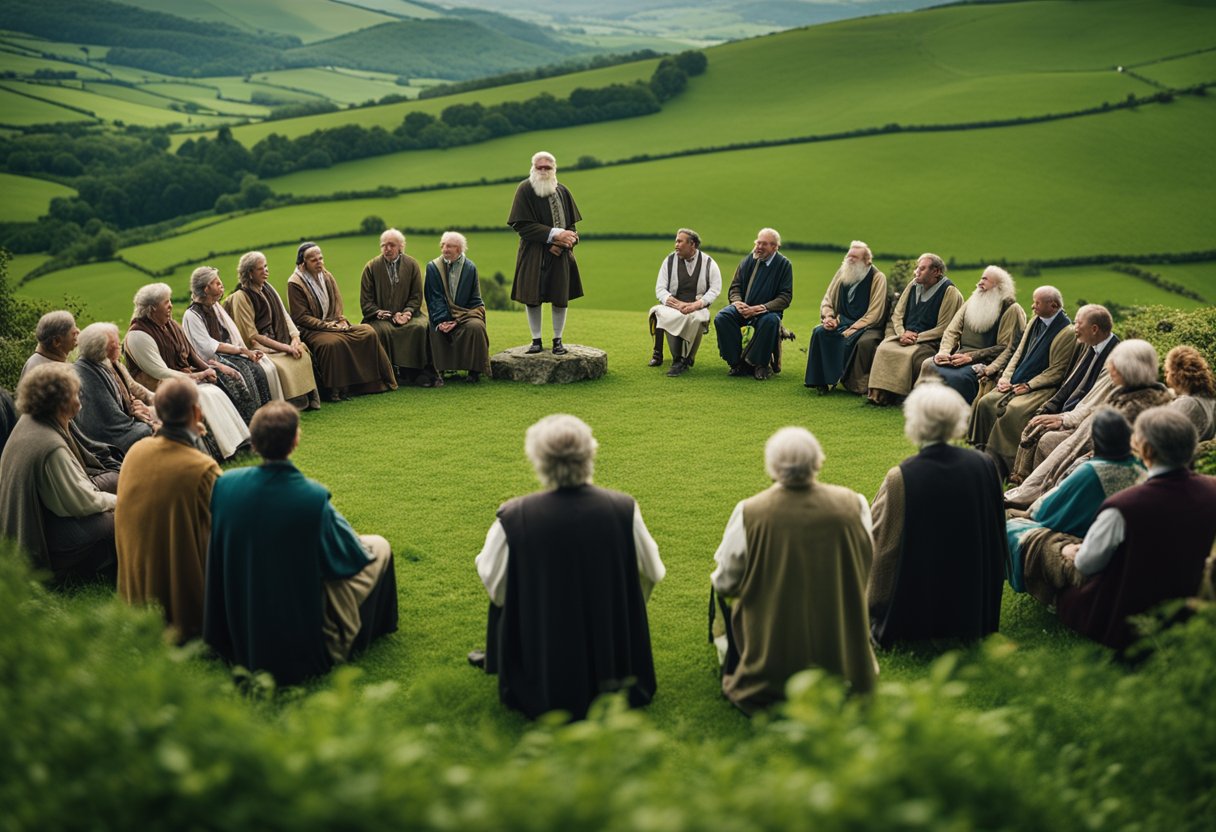
Within these laws, principles such as honour, kinship, and social responsibility were central, marking a system favouring restorative rather than punitive justice. The Brehon Laws were sophisticated and addressed various aspects of life, from property and land laws to social transactions and family matters. They offer insights into the complexities of ancient Irish life and the societal roles that defined it. Their legacy continues to be a subject of fascination among scholars and those with an interest in Irish history, as they provide a window into a society that values communal harmony and equitable resolution.
Historical Context
Before delving into the specific aspects of the Brehon Laws, it’s essential to understand their foundation and significance in the fabric of ancient Irish society. These laws were not just a legal framework; they were a reflection of the customs, social norms, and worldviews of Early Irish Law.
Origins and Evolution
The Brehon Laws originated in a society where oral tradition was paramount, with the earliest instances dating back to pre-Christian Ireland. These laws evolved over time, influenced by the customs and values of the Gaelic people. The centrality of the clan and the importance of kinship dictated that these laws were adaptable and designed to maintain harmony within the complex structure of families and communities.
Manuscripts and Records
Preserved through meticulous transcription, the Brehon Laws were eventually codified in various Manuscripts. Our knowledge of these laws comes from the written records compiled by scholarly classes who translated the once-oral codes into Old Irish. Remarkably, some of these compilations have withstood the test of time, offering us a lens to view the societal structure of early Ireland.
Early Ireland and the Senchas Már
The Senchas Már is one of the principal bodies of legal commentary and stands as a cornerstone in understanding Early Irish Law. It provides a comprehensive vision of the societal norms and legal principles of the time. These texts were written in Old Irish, showcasing the interplay between the secular legal tradition and ecclesiastical influences while maintaining respect for the enduring oral tradition.
Key Principles and Structure
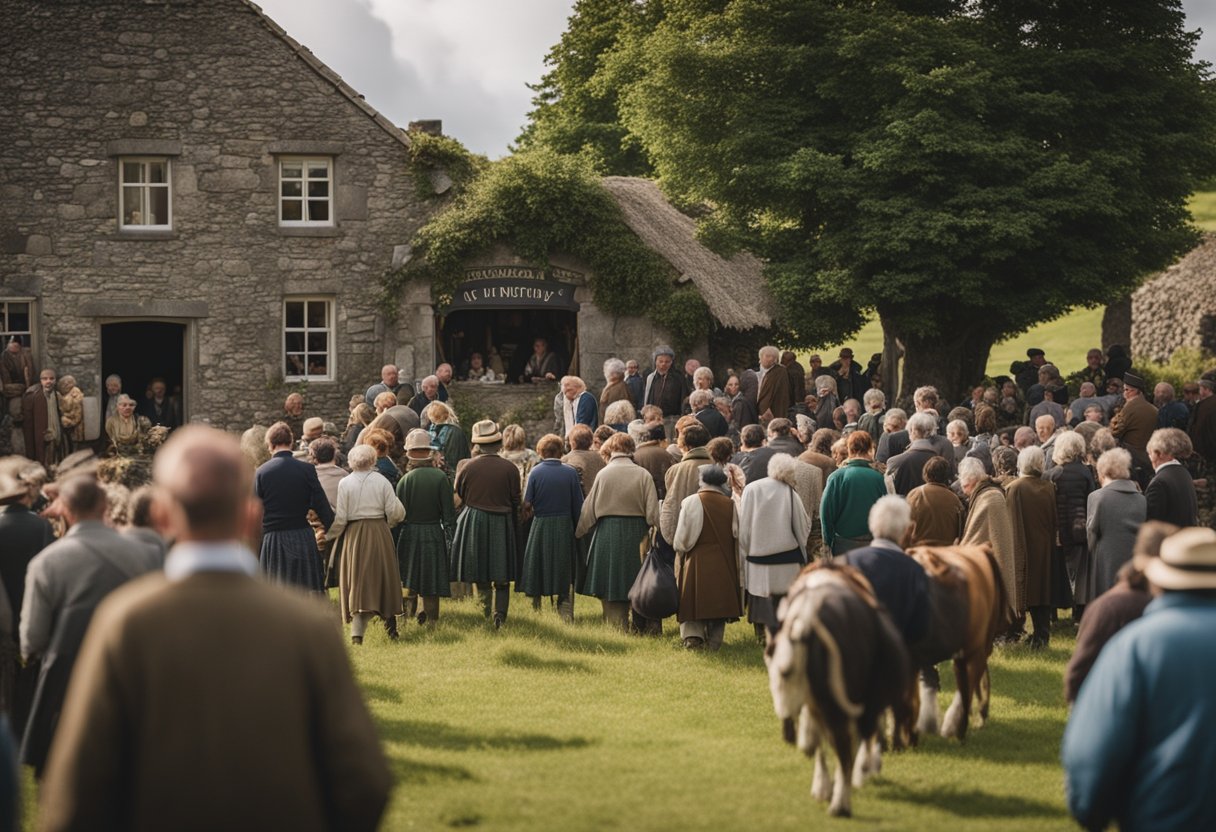
The Brehon Laws were a sophisticated and progressive legal system that shaped ancient Irish society, emphasising a restorative approach to justice that sought to maintain social order and harmony. We will explore the fundamental aspects of this system, focusing on its hierarchy and status, methods of justice and enforcement, and its inherently restorative nature.
Hierarchy and Status
Under the Brehon Laws, Irish society was meticulously organised into a hierarchy that began with the king and filtered down through nobles, commoners, and slaves. One’s status was reflected in their honour price, which measured both their wealth and social standing. Higher honour prices meant greater societal influence and more severe penalties in the event of transgressions. Thus, the system intricately linked one’s legal treatment to their place within the social strata.
Justice and Enforcement
Justice within the Brehon legal framework was administered by learned judges known as Brehons. They were responsible for interpreting the law and were highly respected within their communities. Instead of a state enforcement system, Brehons would render decisions, and the community would help enforce them, ensuring that justice was a communal responsibility.
Restorative Approach
A key aspect of the Brehon Laws was its restorative justice principles, aiming to repair harm and restore balance to the community. Rather than punitive measures, the legal system focused on compensation and reconciliation between parties. This restorative approach prioritised societal equilibrium over retribution and was central to maintaining a just and balanced society.
Societal Roles and Kinship

In ancient Irish society, kinship and clan affiliation played pivotal roles in defining an individual’s rights, responsibilities, and status. Our examination of the social fabric woven by the Brehon Laws reveals a sophisticated tapestry of interconnected family ties and societal rankings.
Family and Clan System
The basic social unit was the family, which extended into larger kinship groups known as clans. These clans were bound together by common ancestry and shared land. A prominent kinship unit within this system was the Derbfine, a group of relatives that encompassed four generations and were crucial for determining succession and inheritance. These familial structures were the bedrock upon which social norms within society were built, dictating everything from property rights to legal disputes.
The Role of Nobles and Commoners
Within the clan, nobles held positions of power and influence, often leading in both war and peace. Nobles, or the noble class, were tasked with the governance of land and the well-being of their kin. In contrast, commoners, or non-nobles, were primarily free landowners, farmers, and craftsmen who made up the bulk of the population. Each had its place within the social hierarchy, with specific duties and privileges as set by the Brehon Laws, contributing to a harmonious societal structure that emphasised the value of each member’s role.
Property and Land Laws
In discussing the intricacies of Brehon laws, we find the frameworks governing land and property to be foundational to ancient Irish society. These laws intricately defined land ownership and the usage rights associated with it, which are particularly noteworthy in the context of agriculture and arable land.
Land Ownership and Rights
Under the Brehon laws, land ownership was not absolute as we understand it today but rather a system of rights held in a complex hierarchy. Each class of society held different entitlements to land use, though the family unit often worked the land collectively. The land was typically owned by the wider kin group or fine, and individuals had a shared right to use the land for grazing or farming.
In this system, property was often divided according to rank within the clan, where the leader – known as the ri or chieftain – allocated land as needed. The concept of a contract was evident in these allocations, demonstrating early forms of legally binding agreements between parties.
Agriculture and Arable Land
With regard to agriculture, the Brehon laws provided detailed regulations on the management and distribution of arable land. Emphasis was placed on the sustainable use of land, ensuring that the soil remained fertile and productive for future generations.
These ancient statutes recognised the importance of crop rotation and the restitution of nutrients to soil. Any disputes that arose concerning arable land and its use were settled according to the established principles within these laws, maintaining a balance between land preservation and the community’s need for sustenance.
Contracts were prevalent in the context of agricultural tenancies and land management, presaging modern practices in their formality and the mutual obligations they established. Thus, Brehon laws played a crucial role not only in legal affairs but also in the stewardship of the land and the promotion of a resilient agrarian system.
Crime and Punishment
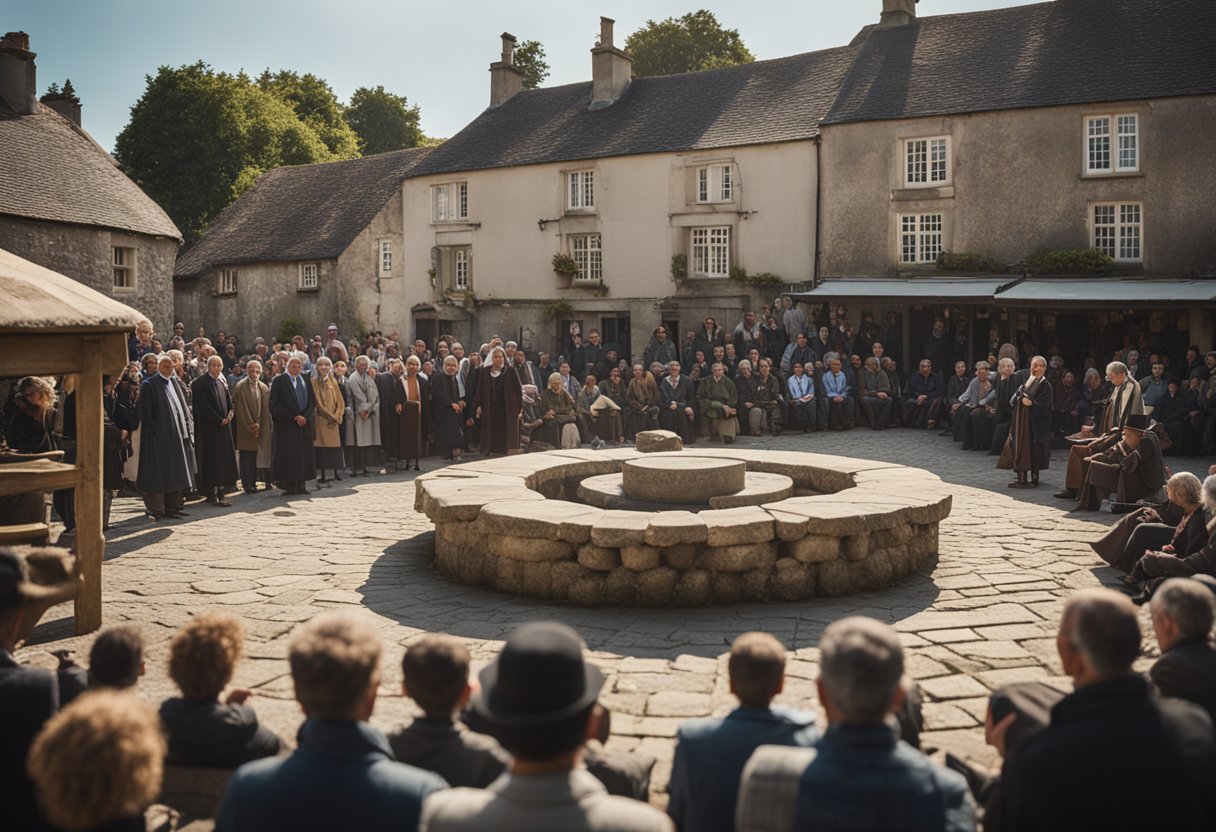
Within the Brehon laws, the approach to crime and punishment was complex and nuanced, reflecting a society that prioritised restorative justice over retributive measures. Let’s explore the details.
Types of Offences
The ancient Irish legal system recognised a variety of offences, from personal injury to property damage. Each crime was carefully categorised, often taking into account the status and honour price of both the victim and the perpetrator. For example, personal violence against someone of high status would incur a heavier fine than the same act against a person of lower status. Property crimes, including theft and damage, were also subject to strict regulations, where compensation to victims was a common recourse.
Punishment and Fines
The concept of punishment in Brehon law leaned heavily towards monetary fines and compensation rather than imprisonment. Crimes were assessed for their severity and impact, with fines proportionally charged—not to the state, but directly to the victims or their families. This system of reparation was designed to restore balance and maintain social harmony. The specific amount would often depend on the perpetrator’s honour price, a value determined by their social standing and property. High-ranking officials had a greater honour price and, thus, paid more significant fines.
Economic and Social Transactions

The Brehon laws intricately governed the economic and social transactions of ancient Ireland, encompassing contracts and obligations. The trade economy was particularly centred around cattle, which was the primary form of wealth.
Contracts and Obligations
Under the Brehon laws, contracts and obligations were taken seriously, with societal values deeply embedded within these agreements. The economic transactions hinged on honour and security, ensuring the parties involved adhered to their commitments. Legal texts explicated contractual stipulations and the consequences of breaching them, ensuring a structured approach to social and business interactions.
Trade and Cattle Economy
Trade in ancient Irish societies prominently featured cattle, which represented a core aspect of the economy and wealth. Transactions involving cattle were meticulously recorded, with stipulations outlining the payments and values of cattle in trade deals. Security for transactions often came in the form of sureties or pledges, safeguarding the fulfilment of trades and other economic activities.
Family Law
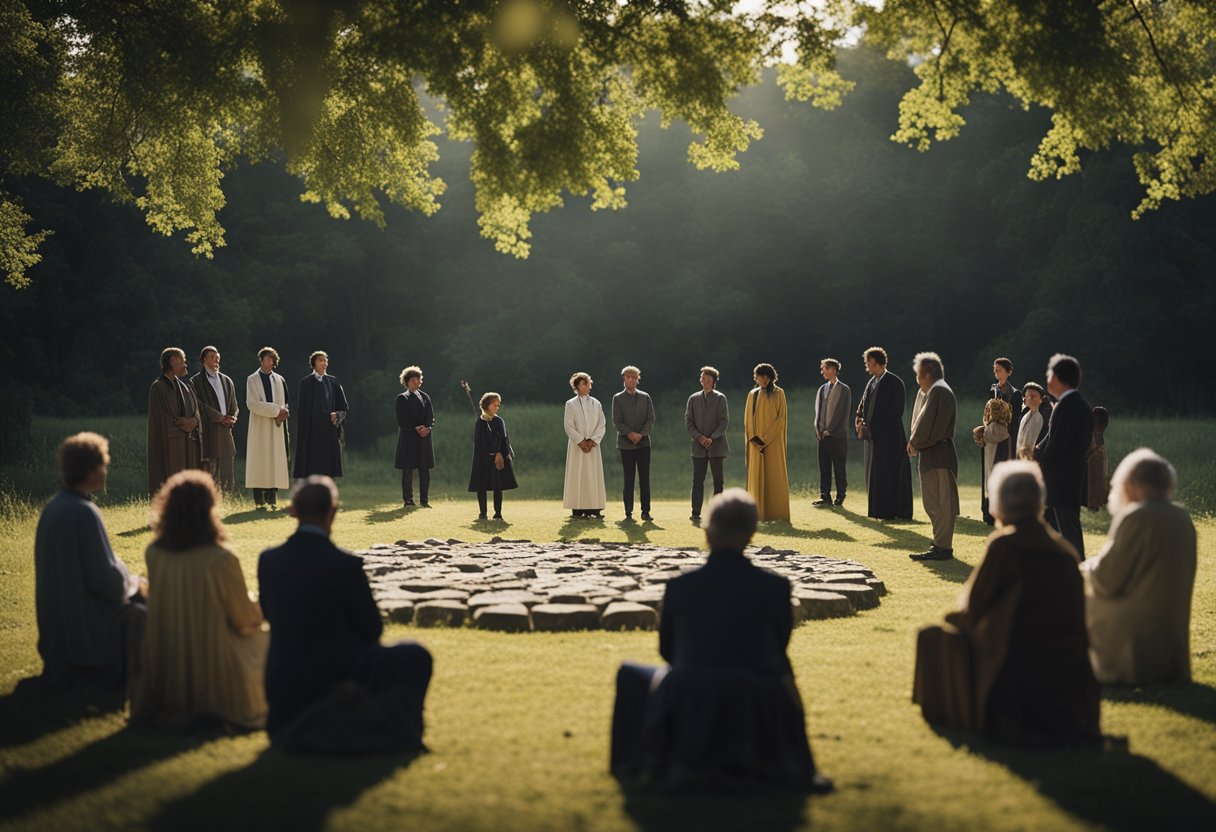
In the complex tapestry of ancient Irish society, the Brehon Laws offered detailed provisions for familial relations, particularly focusing on marriage, divorce, inheritance, and succession, which were deeply intertwined with the kinship structure of the time.
Marriage and Divorce
The ancient Irish legal framework afforded considerable attention to marriage, recognising this union as a contractual bond that could be entered into and dissolved under specific circumstances. Marital consent was essential, and both parties possessed distinct rights and responsibilities. The Brehon Laws delineated a variety of marriage types, each with varying degrees of status and entitlements. Divorce was permissible under the Brehon Laws, predicated on several grounds, such as infertility or serious wrongdoing. Upon the dissolution of a marriage, the division of property was handled with fairness, ensuring that each party retained their original contributions to the union.
Inheritance and Succession
Inheritance and succession under the Brehon Laws adhered to a complex system that prioritised close kin, known as Derbfine, in the absence of direct heirs. The kinship system dictated the intricate distribution of property and assets, ensuring that each member of the family was considered in the transfer of wealth across generations. Land, as the most significant form of wealth, was not owned by individuals but by the wider kin group, complicating succession but ensuring the clan’s continuity over time. The laws also addressed the importance of honour prices and fines, reflecting the value and reputation of individuals within their community.
Through meticulous regulation of family dynamics, the Brehon Laws fostered a society where a person’s kin played a pivotal role in defining legal rights and societal station, clearly demarcating the path of assets from one generation to the next.
Interaction with Other Legal Systems
Our exploration of ancient Irish law reveals significant changes following external influences, particularly during the Norman Invasion and the gradual transition to English Common Law.
Norman Invasion and Gaelic Law
With the arrival of the Normans in the 12th century, the Brehon Laws, which underpinned Gaelic Ireland’s legal system, encountered the feudal laws of Europe. This clash of legal systems led to a complex relationship between the established Gaelic practices and the newly introduced Norman customs. In some areas, particularly those under strong Norman control, the Brehon Laws were sidelined in favour of the imported feudal legal system. However, in Gaelic-controlled regions, traditional Brehon laws continued to be practised, although they often had to coexist with or adapt to Norman law.
Transition to English Common Law
As the English crown consolidated its power in Ireland, the English Common Law system replaced the indigenous Brehon Laws. This eradication was not without resistance; Gaelic legal traditions were deeply woven into Irish society. The 16th and 17th centuries marked a significant shift as English statutes and common law became increasingly dominant, symbolising not only a change in legal practices but also broader cultural and political transformations within Ireland. This transition was part of a wider campaign by the English crown to centralise power and harmonise legal systems across its territories. The absorption of Gaelic law into English Common Law reflected the broader assimilation and adaptation taking place within Irish society during European expansion.
Brehon Law’s Endurance and Legacy

Before delving into the specific aspects of the Brehon Law’s endurance and legacy, it is essential to recognise how these ancient statutes have transcended time. They not only survived past the 17th century but continue to influence modern legal thought and Irish culture.
Survival Post-17th Century
The Brehon Laws, the ancient laws of Ireland, managed to endure well past their practical application, which ceased in the 17th century. Legal scholars and historians have meticulously studied the extensive manuscripts that have been preserved. This body of work provides us with a window into Ireland’s past, showcasing a legal system rooted in societal harmony and restitution rather than punishment. Despite the English subjugation of Ireland and the enforced replacement of Brehon laws with English common law, the essence of these ancient statutes has been immortalised in Irish heritage and occasionally surfaces in legal discussions.
Influence on Modern Legal Thought
Our regard for the Brehon Laws today stems from their progressive nature, particularly their sophisticated mechanisms for social resolution and restorative justice principles. The influence of these laws extends into modern legal thought, highlighting values that emphasise the restoration of harmony over retribution. Irish culture, with its profound respect for learning and lore, continues to celebrate the Brehon Laws as a cornerstone of Celtic identity. As we analyse these ancient texts, we recognise the lasting heritage they’ve bestowed upon our legal foundations and societal norms. The Brehon laws’ embrace of fair leadership and equitable resolutions are themes that persist in contemporary discussions among legal theorists and cultural scholars keen on adapting such principles to current legal systems.
Frequently Asked Questions

In this section, we’ll address some of the most common inquiries about the Brehon laws, their role in ancient Irish society, and the ways in which they contrast with other legal systems.
What were the Brehon laws in ancient Ireland, and how did they influence society?
The Brehon laws were a series of legal standards that governed daily life in ancient Ireland. They were notable for their progressive approach, including fair restitution over severe punishments for crimes, reflecting a society that valued harmony and social order.
How did the Brehon laws differ from the feudal legal systems in Europe?
Unlike the feudal systems of Europe that centred on land ownership by a monarchy or lords, the Brehon laws were rooted in a more egalitarian and community-focused society where land was owned collectively by the clan.
What aspects of hospitality are covered under the Brehon laws?
Under the Brehon laws, hospitality was not merely a cultural norm but a legal obligation. Clear guidelines outlined guests’ entitlements and hosts’ responsibilities, reflecting the high value placed on generosity and alliance.
In what way did Christianity impact the Brehon laws and their application?
When Christianity arrived in Ireland, it did not replace the Brehon laws but rather influenced them. The interaction between Christian doctrine and pre-existing laws resulted in a blended legal system incorporating Christian values into the traditional Brehon structure.
Which legal system succeeded the Brehon laws, and what changes did it bring to Irish society?
The English common law system replaced the Brehon laws following the English conquest of Ireland. It introduced a more centralised form of governance and legal processes, altering the societal landscape to a structure more aligned with English customs.
How were disputes and crimes adjudicated under the Brehon legal framework in the 8th century?
During the 8th century, dispute resolution under the Brehon legal framework was administered by Brehons, or judges, who acted more as arbitrators or mediators. Their role was to interpret the laws and facilitate settlements that focused on restitution and compensation rather than punitive measures.






